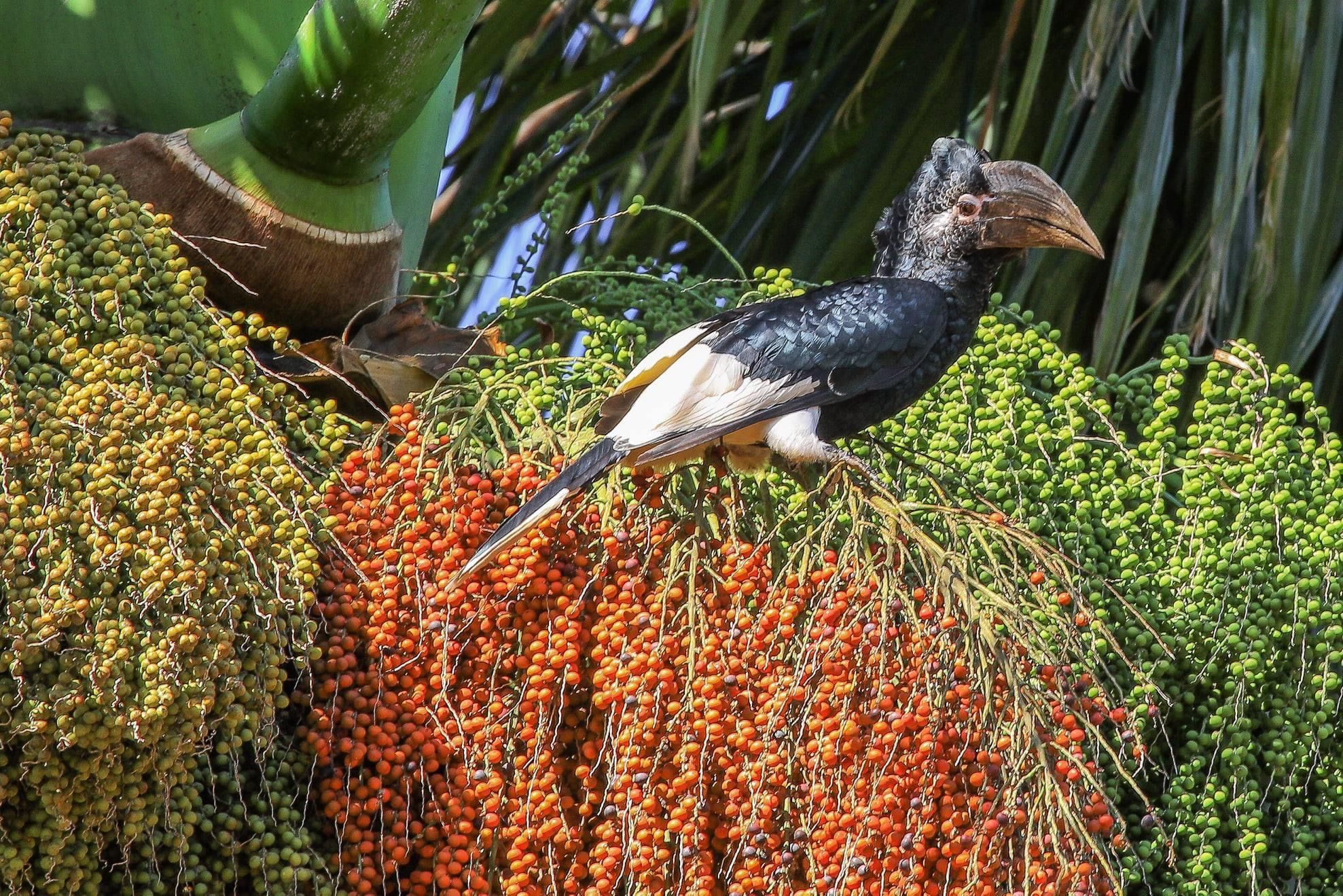The Black-and-white-casqued Hornbill is distributed to evergreen forests and savanna across equatorial Africa, in central and western Africa.
Females have a smaller casque and a black bill. The purpose of the casque is unknown for males, although suggested to be for sexual characterization.
The black-and-white-casqued hornbill has very mobile eyes which is not a common trait in birds.
This means that its eyes themselves can move in their socket, while other birds tend to have to move their heads to see.
It is capable of displaying emotions through the feathers at the top of the head, which allows it to communicate its emotional state.
Black-and-white-casqued hornbills are quite vocal, with a large repertoire of calls, one of which can be heard from a distance of 2km.
A monogamous species. Pairs commonly nest in naturally formed cavities 9 to 30 m high in large (>3 m circumference) rainforest trees.
Due to the rarity of these nesting cavities, there is a high degree of intraspecific competition for nesting sites. In order to protect their nest, pairs seal the cavity with mud pellets collected by the male. Inside, the female lays a clutch of 2 eggs, which are white in color with pitted shells. The eggs are incubated for 42 days while the male delivers food to the female hourly through a small slit, regurgitating numerous fruits, mammals, and insects. The male can bring up to 200 fruits per visit.
Usually, only one offspring is reared, with the chick from the second-laid egg dying of starvation. Newly hatched chicks have pink skin and open their eyes at 20 days of age. The offspring fledge in 70 to 79 days and can feed themselves by 40 to 72 days after fledging.
The diet consists mainly of figs, fruits, insects, and small animals found in the trees. Black-and-white-casqued hornbills are mainly frugivorous, with fruit comprising 90% of their diet, 56% belonging to Ficus species. They forage by hopping from branch to branch in the rainforest canopy and reaching for fruit with the tip of the bill, which they then swallow whole. This species is known to consume over 41 plant genera. The black-and-white-casqued hornbill does not consume water directly and seems to instead hydrate itself from the water contained in the fruits that represent most of its diet.
Black-and-white-casqued hornbills mediate seed dispersal of rainforest trees, by defecating or regurgitating seeds.
Carnivores, apes, monkeys, snakes, raptors, and humans all prey on these hornbills.
#Birdsofeastafrica
#visituganadarwandatanzania
Comments
0